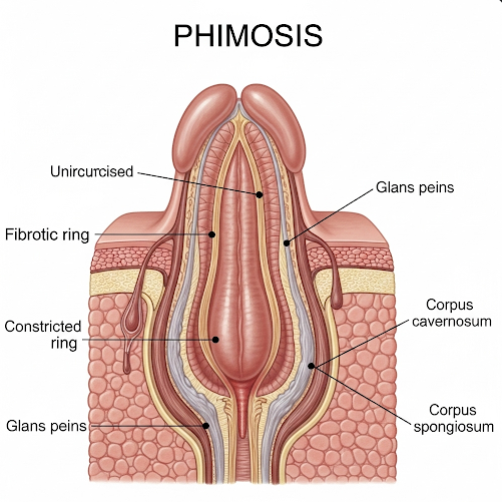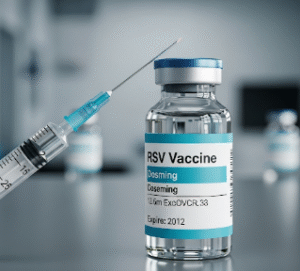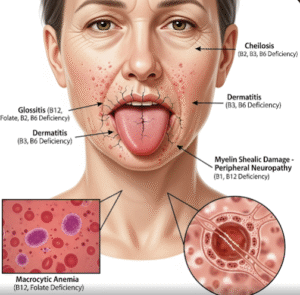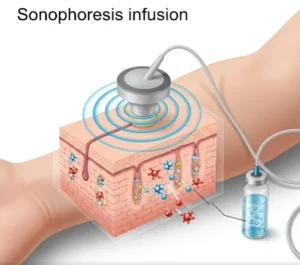Overview
Phimosis is a medical condition where the foreskin of the penis cannot be fully retracted over the glans (head) of the penis. It is common in infants and young boys but usually resolves on its own with age. In adults, phimosis can be problematic and may cause discomfort, hygiene issues, or even lead to complications such as infections. When symptomatic, it often requires medical intervention, including non-surgical or surgical treatment.
What is Phimosis?
Phimosis occurs when the foreskin is too tight to be pulled back over the head of the penis. This condition is classified as either physiological or pathological. Physiological phimosis is normal in newborns and usually resolves naturally by the age of 3 to 7 years. Pathological phimosis, on the other hand, results from scarring, infection, or inflammation and typically requires treatment.
Symptoms
Common symptoms of phimosis may include:
- Difficulty retracting the foreskin
- Swelling or redness around the foreskin
- Pain or discomfort during urination or erections
- Ballooning of the foreskin during urination
- Recurrent urinary tract infections (UTIs)
- In some cases, painful erections or sexual dysfunction
Causes
Phimosis can be caused by various factors, including:
- Natural development in infants (physiological phimosis)
- Chronic inflammation or infection of the foreskin (balanitis)
- Poor hygiene practices
- Repeated forceful retraction of the foreskin
- Skin conditions like lichen sclerosus that cause scarring
- Diabetes, which increases the risk of infections
Risk Factors
Factors that increase the risk of developing phimosis include:
- Being uncircumcised
- Inadequate personal hygiene
- Recurrent infections or inflammation of the foreskin
- Age (especially young children and older men)
- Chronic conditions such as diabetes
- History of skin disorders
Complications
If left untreated, phimosis may lead to:
- Pain during urination or sexual activity
- Recurrent infections (balanitis, balanoposthitis)
- Paraphimosis (a medical emergency where the retracted foreskin gets stuck behind the glans)
- Urinary retention
- An increased risk of penile cancer (though rare)
- Psychological distress or embarrassment
Prevention
While physiological phimosis cannot be prevented, the risk of pathological phimosis can be minimized by:
- Practicing good genital hygiene
- Avoiding forceful retraction of the foreskin in children
- Treating infections or inflammation promptly
- Managing chronic health conditions like diabetes
- Using topical medications for early signs of inflammation or tightness
Treatment Options in Korea
South Korea offers advanced and compassionate care for patients with phimosis. Treatment options include:
- Topical steroid creams: These are often used to reduce inflammation and loosen the foreskin gradually.
- Gentle stretching exercises: Guided by a medical professional, these can help improve flexibility.
- Circumcision: A common and definitive treatment for severe or recurrent cases, performed with precision using modern surgical techniques such as laser or stapler circumcision.
- Preputioplasty: A less invasive surgical option that preserves the foreskin while relieving tightness.
- Pediatric urology specialists: Available in most major hospitals to manage cases in children with expertise.
Korean hospitals and clinics are well-equipped with cutting-edge medical technology and English-speaking urologists, ensuring both safety and comfort for international patients. Many institutions also offer discreet consultation and same-day surgery services.













